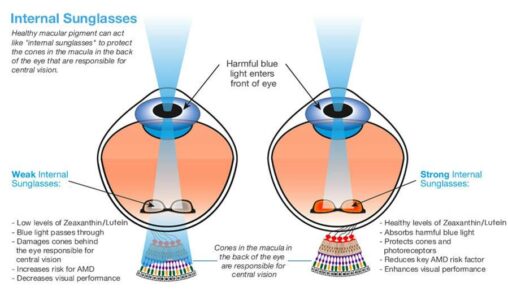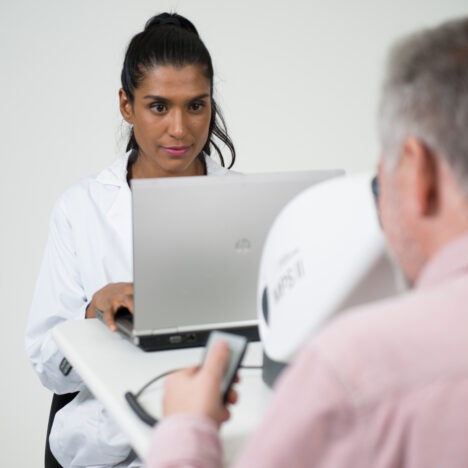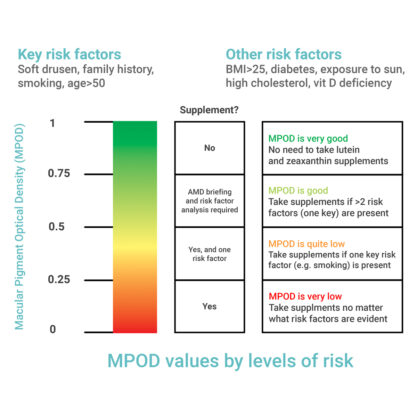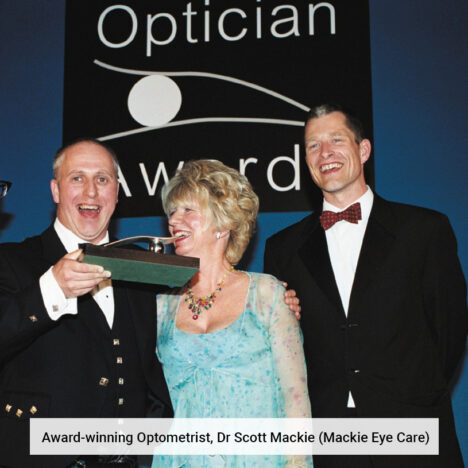AMD prevention in practice
Home : Products : Macular Pigment Screener – MPS II : AMD prevention in practice

Age-related macular degeneration
A global socio-economic threat
A disease of the retina, age-related macular degeneration (AMD) is a leading cause of permanent vision loss in people over the age of 50.
Characterised by a painless, gradual distortion of sight, which can progress to the complete loss of central vision, greatly reducing quality of life.
As the world population ages the number of people affected by AMD is expected to grow significantly in the coming years. A recent study of the global prevalence of the condition projected 196 million sufferers by 2020, increasing to 288 million over the following 20 years¹. Given the global cost of AMD was $343 billion dollars in 2010, healthcare costs will spiral unless effective screening, prevention and treatment strategies are put in place.
¹ Wong et al (2014), Global prevalence of age-related macular degeneration and disease burden projection for 2020 and 2040: a systematic review and meta-analysis. Lancet Glob Health, 2(2)
Macular pigment, blue light and MPOD
And the vital role of two carotenoids
Macular pigment is located in the central area of the retina, the macula, and is made up of the carotenoids lutein and zeaxanthin¹. It functions like ‘internal sunglasses’, blocking harmful blue light that damages the eyes over the course of a lifetime. The denser the macular pigment the more blue light is blocked. This measure is called macular pigment optical density (MPOD).
¹Clinical evidence suggests that the antioxidant properties of lutein and zeaxanthin play a key role in visual function, protecting against the risk of AMD.


Preventing the risk of AMD
Raising awareness
Regular screening checks are essential to detect, manage and monitor levels of macular pigment and mitigate the risk of developing AMD.
Screening for low MPOD using the Macular Pigment Screener (MPS II) is currently the best way to identify patients at risk of AMD. Whether dealing with avoidable risk factors, such as smoking, poor diet, obesity and high alcohol consumption, or unavoidable risk factors like age and genetic predisposition, it is essential to raise awareness in the general population so people can make informed lifestyle choices.
AMD patient awareness leaflet | AMD patient awareness poster
A proven prevention strategy
Lutein, zeaxanthin and the MPS II
A large body of clinical evidence, supports the fact that low macular pigment optical density (MPOD) is a potential biomarker for AMD risk and that lutein and zeaxanthin play a key role in protecting against this risk.
Lutein and zeaxanthin can be found in small doses in foods like spinach and kale or in high doses in purpose-made supplements proven to increase macular pigment over time.
A growing number of optometrists in the US, Europe and Asia are now using the MPS II to help identify patients with low MPOD then monitoring their macular pigment on an ongoing basis alongside a programme of lutein and zeaxanthin supplementation.
Clinical data: lutein, zeaxanthin and MPOD | How does the MPS II work?


Case study: Mackie Eyecare, Glasgow
Adding value for practitioners and patients
Reduce risk for patients
“As a patient with only one functional eye with central vision, I was advised by Dr Mackie to get my macular pigment checked, which revealed that I needed to start taking nutritional supplements. I am delighted that further testing of my macular pigment with the MPS II has revealed that it has increased and my risk of developing AMD has reduced.”
Patient, Mackie Eyecare Ltd.
Diversify your services
The MPS II is extremely good value and we have already made our money back on the device several times over through initial consultation and follow up fees. We sell supplements at RRP and thus make money each month the patient is using them, but I feel this is ethical if you are giving them to the correct patient groups. We’ve been very active in the local area publicising what we do.
Dr Scott Mackie, Consultant Optometrist
